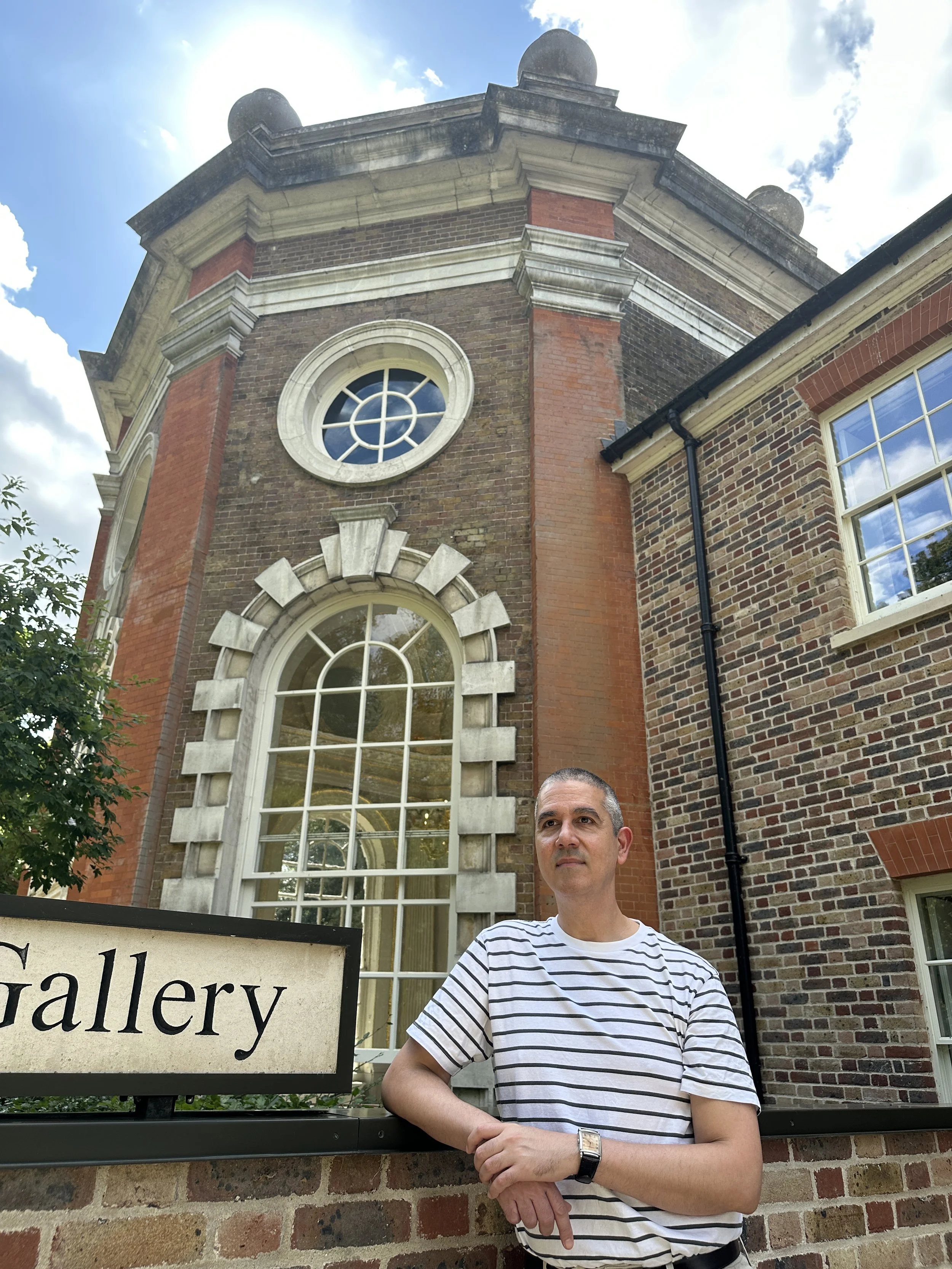I am beyond thrilled to share the news that starting August 2025 I'll be in residency at Orleans House Gallery as part of Artists Make Space 2025-26, a programme supported by Richmond Arts Service that offers studio space to individual artists and collectives looking to grow their practice.
Over the last 3 years, I have been combining cyanotypes, a photographic process invented in the UK in the 19th century, with Mesoamerican textile dyeing techniques - documented by the Europeans who arrived in the American continent after the 15th century - to make phototextile artefacts.
These phototextile artefacts consist of images printed on cotton using cyanotype printing and then toned with dyestuff made from plants endemic to the American continent. My work explores how Pre-Columbian botanical heritage played a pivotal role in shaping new cultural identities in the rest of the world, particularly through textile and culinary arts.
By bridging historical research with contemporary artistic practices, my work promotes a deeper understanding of the botanical legacies that continue to shape our world. Cyanotypes and textiles become more than just aesthetic mediums—they serve as living archives, testaments to the endurance of cultural memory, and tools for imagining a more sustainable, interconnected future.
I intend to use my time in this residency to experiment with new materials and techniques, contextualise my work and understand in which direction my practice is heading.
Orleans House was built on the site in 1710 commissioned by James Johnston. It was one of the first important villas along the stretch of the Thames in Twickenham. Johnston was a Scottish politician and diplomat who was at the heart of the creation of the United Kingdom and the centralisation of power in London.
Johnston was also involved in Scottish plans to develop new colonies, promoting the failed Darien Scheme, an unsuccessful attempt to establish the colony of New Caledonia in the Darién Gap on the Isthmus of Panama in the late 1690s to control the transatlantic and pacific trade routes.
The name of the house derives from the French King, Louis Philippe, Duc D’Orléans who lived in the house during his time of exile between 1815 and 1817. Louis-Philippe became King of the French from 1830-48, during this time his government promoted colonial expansion in North Africa and occupied much of Algeria.
Orleans House has deep connections with Britain’s colonial history, a legacy which continues to have a major impact on contemporary culture and society through inequality and racism. Orleans House, like many British large estates and houses, was built by people who benefitted from the extraction of resources from the colonies, including the ones in the American continent, through violence and with disastrous results that can still be felt today.
As a Panamanian artist, I feel compelled to acknowledge the colonial history of the building in which I will be working for the following year. Almost 300 years after Johnston moved into his new home, I will be taking residency within the same walls.
Back when the house was built, people like me weren’t meant to exist within these buildings which in turn were erected by resources that exist in a land where they were never meant to be. My work addresses the extraction of these resources and its influence on the rest of the world. Inevitably, the artistic approach to my residency at Orleans House Gallery will respond to its colonial’s past.
My residency will be divided in three phases:
· Research Phase: through August and September 2025 I will be experimenting with new plants and natural dyes for my phototextile artefacts.
· Installation Art Phase: From January to July 2026 I will be experimenting with site-specific installation art and exploring new concepts, materials, and techniques within immersive environments.
· Production Phase: through March and April 2026 I will be producing new phototextile artefacts informed by the developments in my residency.
The programme will also offer the opportunity to facilitate interdisciplinary dialogue and public engagement activities. Watch this space for further information.
Thanks so much to Richmond Arts Service and Orleans House Gallery for this opportunity.
Subscribe to my blog posts here!




